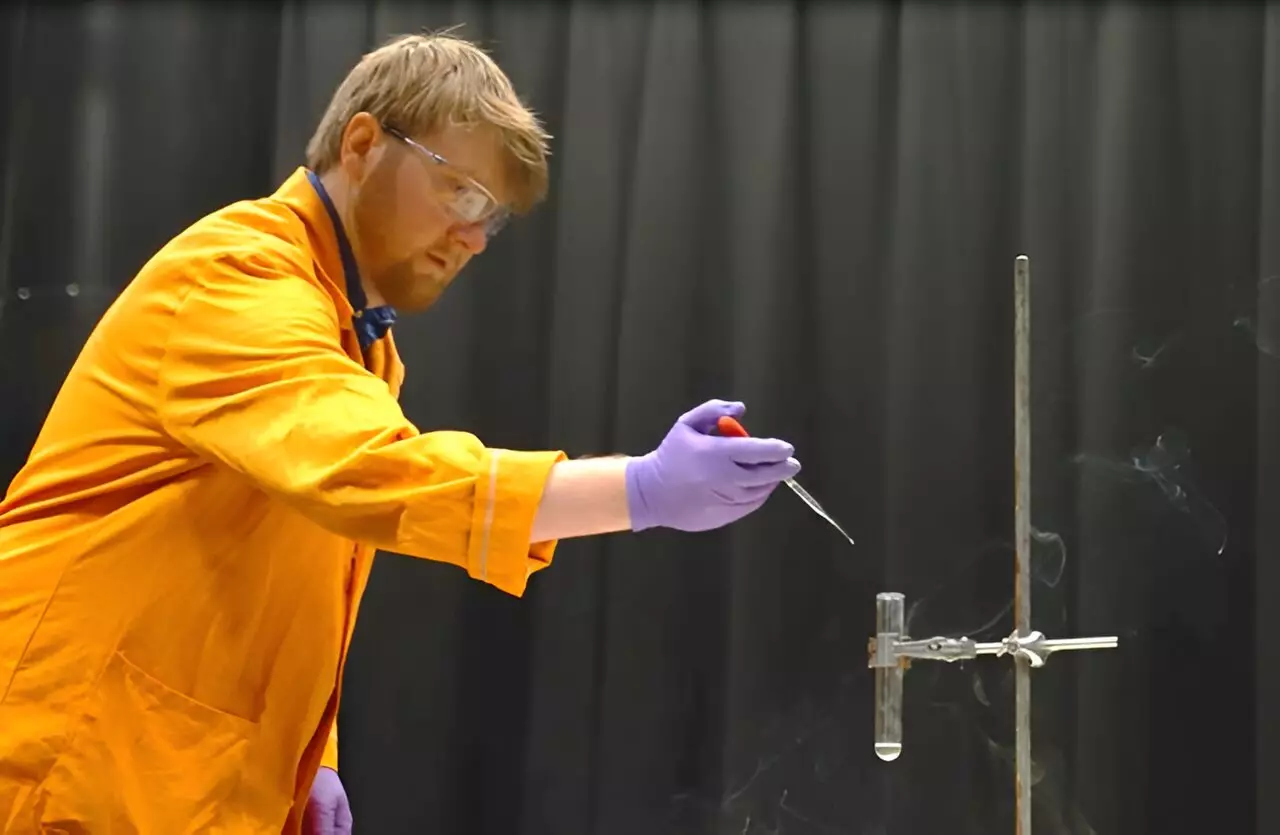In a fascinating exploration of the chemistry behind the Star Wars universe, Professor Alex Baker from the University of Warwick delves into the real-world reactions that may underpin some of the most iconic elements of the saga. From the freezing of Han Solo to the vibrant colors of lightsabers, Professor Baker showcases how science fiction meets science fact in a captivating display of chemical phenomena.
One of the key points highlighted by Professor Baker is the common elements found in both the Star Wars galaxy and our own planet. For example, liquid oxygen, a crucial component in rocket engines in the real world, is also utilized in the propulsion systems of star ships in the Star Wars realm. By demonstrating how oxygen can produce massive amounts of thrust when ignited with fuel, Professor Baker showcases the explosive power that underpins space travel in both universes.
Another interesting parallel drawn by Professor Baker is the use of sodium as a fuel in the Star Wars universe. This element, which reacts explosively with water to produce hydrogen gas, is not only a plot device in the saga but also has practical applications on Earth. From nuclear reactors to chemical reactions, sodium plays a crucial role in energy production and explosive processes, showcasing the versatility of this element across different realms.
Furthermore, Professor Baker explores the role of nitrogen-containing compounds in both warfare in the Star Wars galaxy and explosives on Earth. While fictional elements like Baradium nitrate may be prevalent in the saga, real-world compounds such as nitrates and nitric acid are used in the production of explosives and rocket fuels. The violent reactions produced by these compounds highlight the destructive power of chemical warfare, both in fiction and reality.
Cryogens, often associated with other-worldly technologies, are also present in everyday applications on Earth. Liquid nitrogen and solid carbon dioxide, common cryogenic substances, are used for freezing objects like human eggs in IVF treatments. Professor Baker suggests that the inspiration for Han Solo’s iconic freezing scene may have stemmed from the use of cryogens in real-world practices, blurring the lines between science fiction and scientific reality.
One of the most intriguing aspects discussed by Professor Baker is the chemistry behind the vibrant colors of lightsabers. By conducting flame tests with different elements, he demonstrates how heating various substances can produce different colored lights. This phenomenon, commonly seen in fireworks displays, highlights the relationship between chemical elements and the colors they emit when heated. From bright blues to deep reds, each color reflects the unique energy levels of the electrons within the atoms, shedding light on the intricate science behind the iconic weapon of Jedi and Sith alike.
Professor Baker’s exploration of the chemistry of the Star Wars universe offers a captivating look into the intersection of science fiction and real-world science. By drawing parallels between elements, reactions, and phenomena in both realms, he showcases the deep-rooted influence of chemistry on the iconic storytelling of the saga. As we continue to uncover the secrets of the galaxy far, far away, we are reminded of the boundless possibilities that exist at the intersection of imagination and scientific exploration.


Leave a Reply